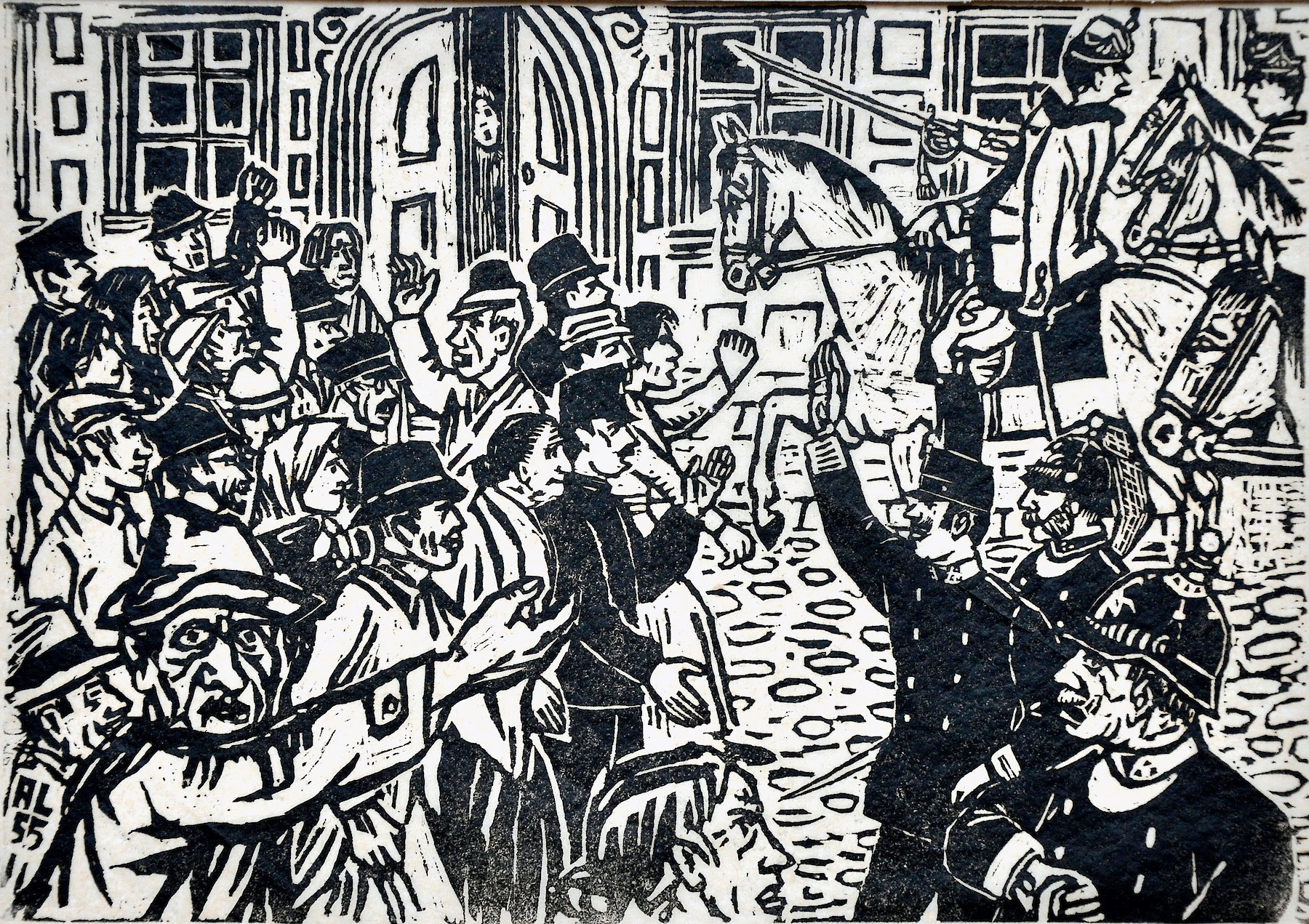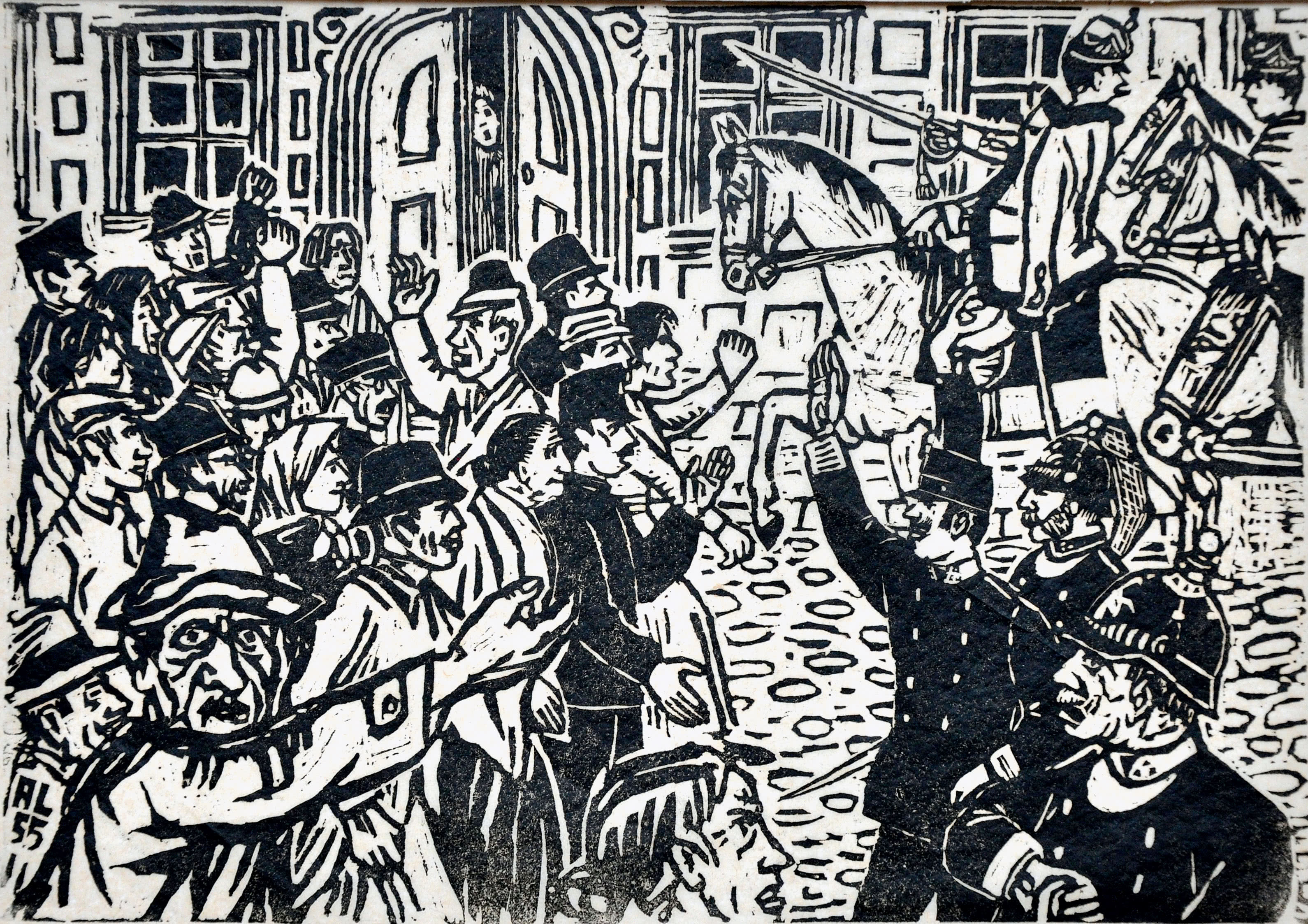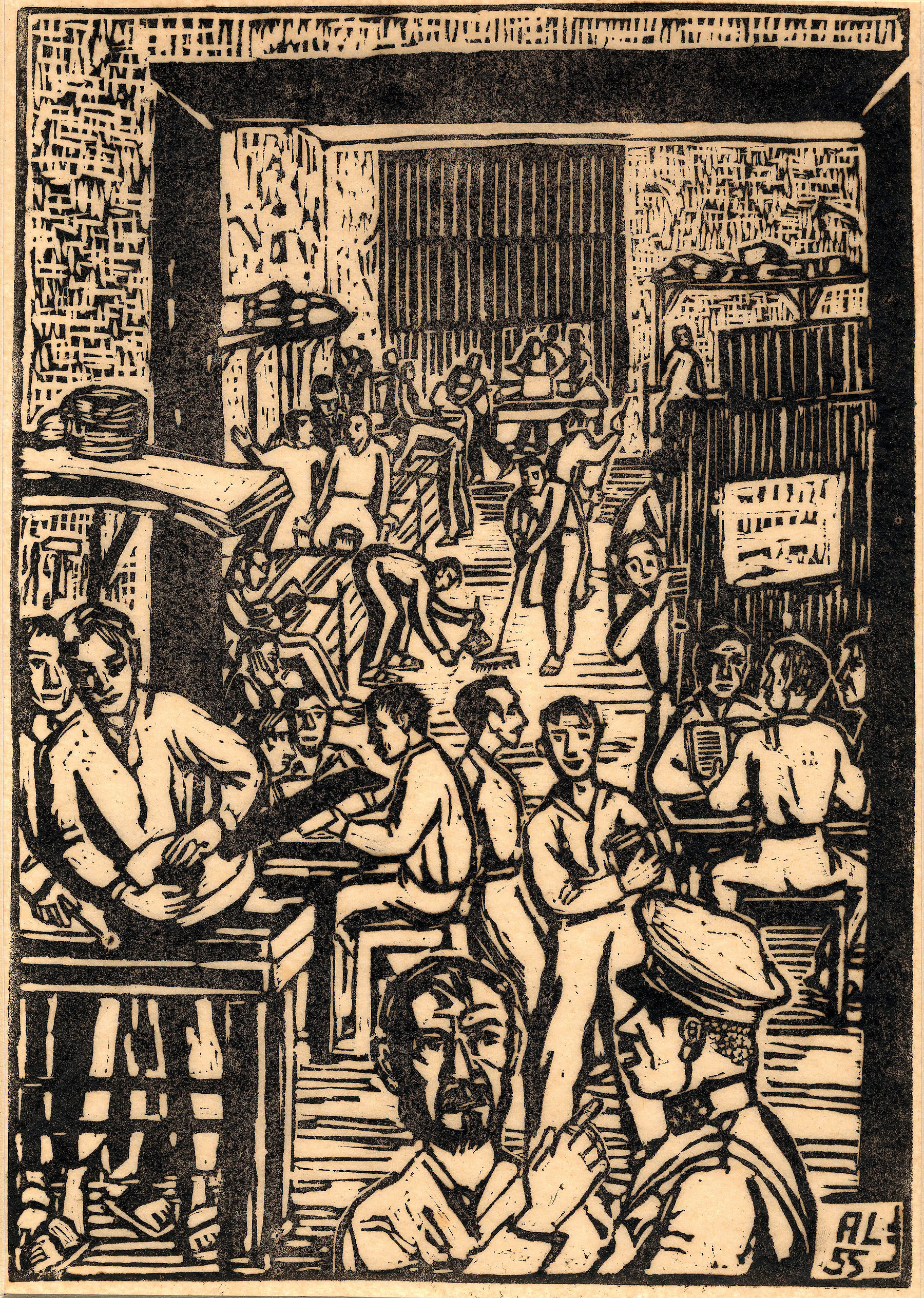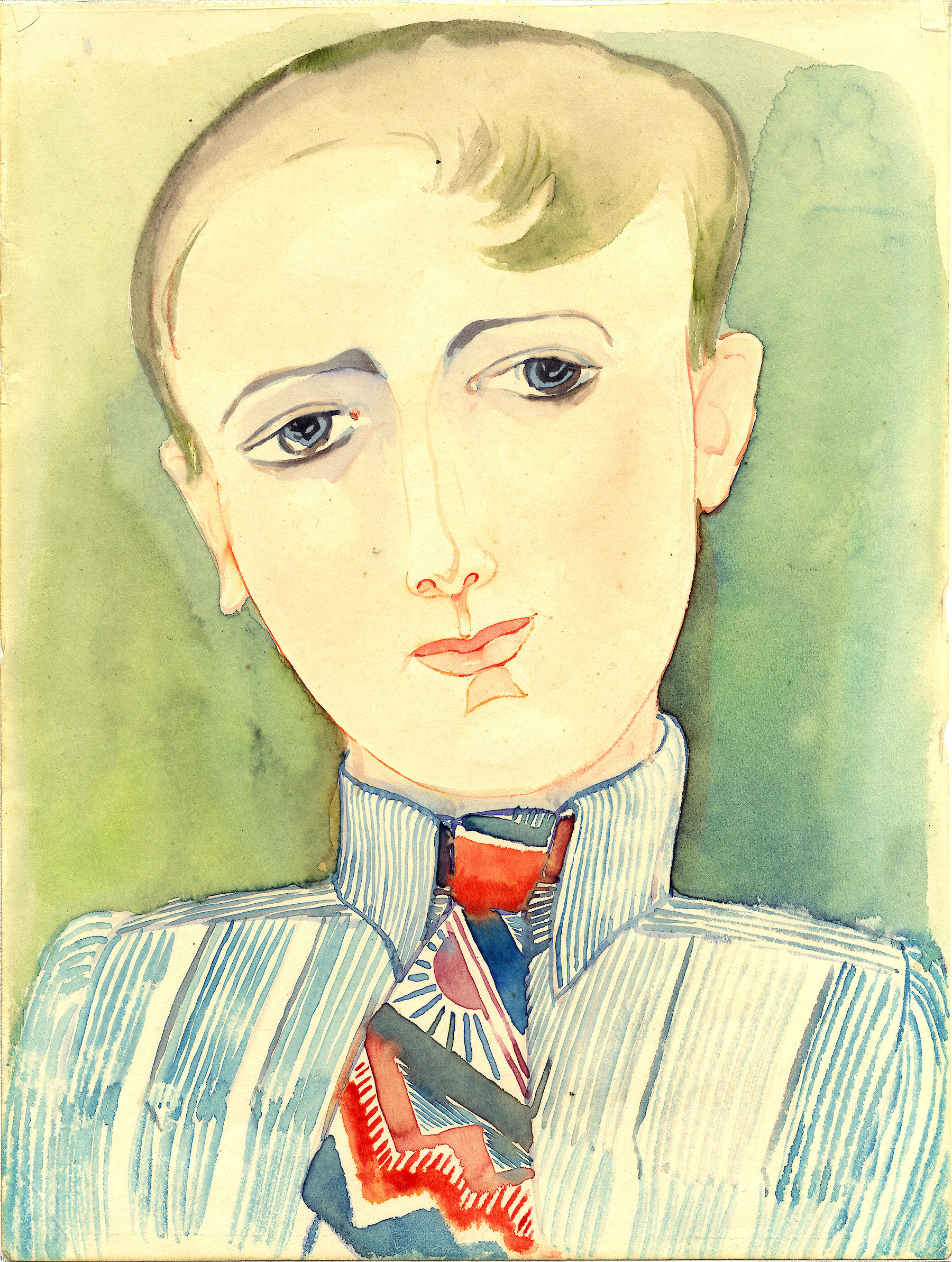

Kirschenrummel (Cherry Rage) 1920 Axl Leskoschek, 1955
Riot in the Years of Famine
The food supply of the families during and after the First World War was especially taken care of by women. Even after the end of the war, the people starved. In the morning of 7 June 1920, the situation got out of control due to too high prices for fruit on the Kaiser-Josef-Markt in Graz. Initially, women claimed for cheaper food, the protests quickly escalated, and were explicitly directed at Jewish shops in the Annenstraße. In the evening, the security forces fired gunshots. Played down in retrospect as “Kirschenrummel“ (Cherry Rage), 13 people were killed when the revolt was quelled.
Woodcut
frame: 44,5 × 31,5 cm
Graz Museum
The Artist Axl Leskoschek
Axl Leskoschek (1889–1976), a convinced socialist after the First World War, consistently committed himself to realism—political works and book illustrations characterized his artistic output. As a founding member of the Graz Secession in 1923, he was playing a decisive role in strengthening modern art in Graz. Because of his political stance, Leskoschek was arrested twice. After the “Anschluss” to the “Third Reich”, he emigrated to Switzerland, and then to Brazil in 1940/41, where he again made a name for himself as an illustrator. In 1948, Leskoschek returned to Austria on the initiative of Viktor Matejka, Vienna’s cultural councillor. His artistic recognition and public commissions were countered by hostility due to his communist sentiments.
Socialist Resistance against Dictatorship
As cultural editor of the social democratic newspaper Arbeiterwille and as a member of the Republican Protection League, Axl Leskoschek was interned twice in the Wöllersdorf detention camp: after the February Uprising of 1934 and because of forbidden political activity in 1936. The second time, he was detained although he had serious health problems. Under pressure from the British Labour Party, Leskoschek, like other social-democrat detainees, was finally released. During his detention he worked on watercolours, allegorical works with hidden criticism of the regime of the “Corporative State” dictatorship. In 1955, Leskoschek created the “Series of Contemporary History” from memory, in which he reproduced events of the First Republic and the Corporative State dictatorship; among these the sheet “Kirschenrummel” (Cherry Rage).
Medium of Resistance
The technique of woodblock printing was very widespread in the interwar period and was regarded as the medium of “leftist” artists. Woodblock printing enabled a large number of copies to be reproduced and distributed and was thus perceived as a democratic medium. But also, the dynamic, expressive formal language supported by this technique was largely associated with politically leftist, revolutionary content.

